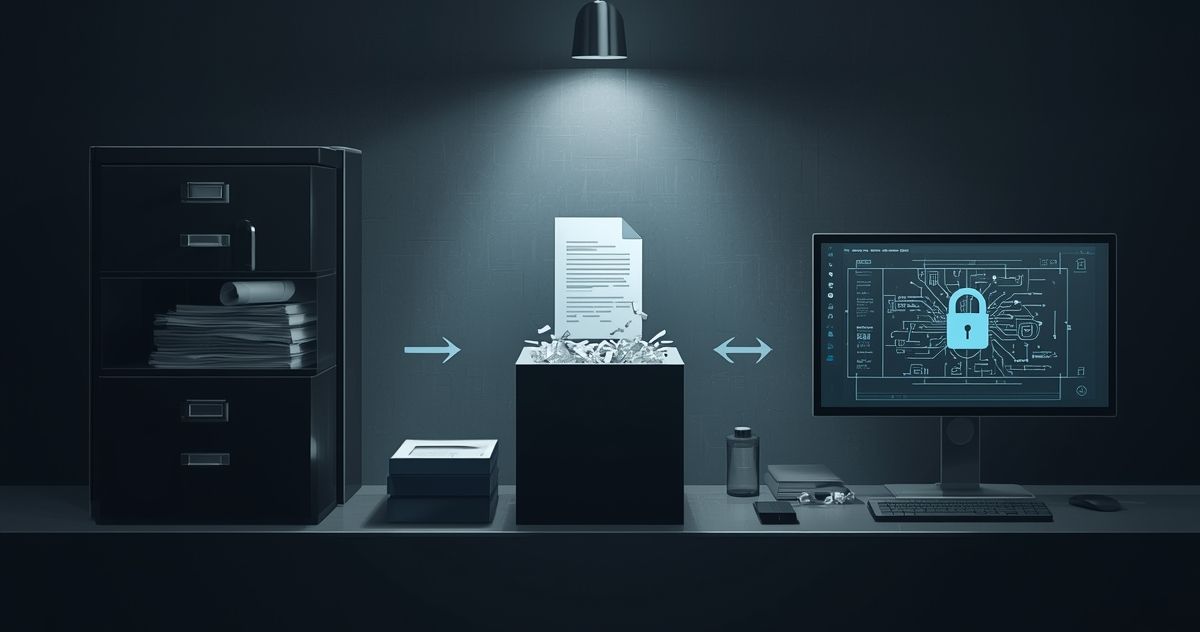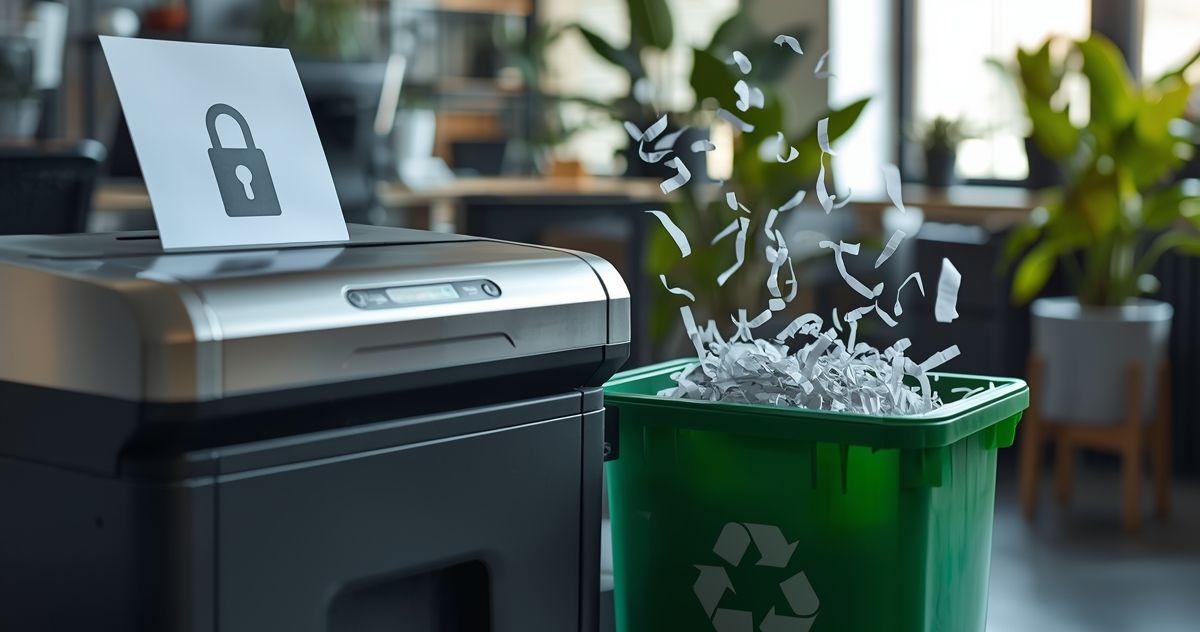Saying Goodbye to Data the Right Way on Your Mobile Devices
Saying Goodbye to Data the Right Way on Your Mobile Devices
In a world dominated by smartphones and tablets, protecting your personal data is more critical than you might think. Whether you're upgrading to the latest gadget or simply decluttering, securely removing from your devices should be at the top of your to-do list. But how do you ensure that your information is completely removed and can't be retrieved by the next user—or worse, a malicious hacker?
This blog post will guide you through the best practices for media destruction on mobile devices. You'll learn essential techniques for securely erasing data from phones and tablets, ensuring your privacy and peace of mind.
Why Data Security Matters More Than Ever
It's no secret that our phones and tablets hold a treasure trove of personal information. From banking details to intimate conversations, these devices are a repository of your digital life. Failing to secure your data before selling or recycling your device can lead to identity theft and other cybersecurity threats.
The importance of data security has skyrocketed in recent years, with an increasing number of people becoming victims of cybercrime due to inadequate data destruction practices. By understanding why data security is crucial, you take the first step toward safeguarding your digital identity.
The Risks of Inadequate Data Destruction
Many people assume that a simple factory reset is enough to erase their data, but this couldn't be further from the truth. Factory resets often leave traces of data that can be recovered with the right tools. Cybercriminals are well aware of this fact and frequently exploit it to access sensitive information.
Understanding the risks associated with incomplete data removal can inspire you to adopt more robust security measures. Neglecting to properly erase your data can have long-lasting repercussions, including financial loss and damage to your reputation.
Understanding How Data is Stored on Mobile Devices
Before you start destroying your data, it's crucial to understand how your mobile device stores it. Mobile devices use flash memory to store information, which operates differently from traditional hard drives.
This type of storage can complicate the data deletion process, as files are often scattered across various sectors. Knowing how data is stored on your device can help you choose the most effective method for erasure. By equipping yourself with this knowledge, you're better prepared to tackle the challenge of securely deleting your data.
Preparing Your Device for Data Destruction
Preparation is key when it comes to securely removing data from your mobile device. Begin by backing up any data you wish to keep, such as photos and contacts. Once you've safeguarded your important files, you can proceed with confidence knowing that nothing valuable will be lost.
This preparation phase sets the stage for the thorough removal of data and allows you to focus on the task at hand. By taking the time to prepare your device, you ensure a smooth transition and minimize the risk of accidental data loss.
Choosing the Right Data Destruction Method
With so many data destruction methods available, choosing the right one can feel overwhelming. It's essential to select a method that aligns with your security needs and the type of device you're using. From factory resets to specialized software, each method offers varying levels of data security.
Evaluating the pros and cons of each option can help you make an informed decision that protects your information. By selecting the most appropriate data destruction method, you take a proactive approach to safeguarding your digital life.
Executing a Factory Reset the Right Way
While a factory reset alone isn't sufficient, it plays a crucial role in the data destruction process. Executing a factory reset correctly can remove the majority of your personal information, serving as a solid foundation for additional security measures. During a factory reset, your device is restored to its original settings, deleting most user data in the process. By incorporating a factory reset into your data removal routine, you establish a baseline level of security that paves the way for further erasure techniques.
The Role of Encryption in Data Destruction
Encryption plays a vital role in data destruction by adding an extra layer of security to your mobile device. When enabled, encryption scrambles your data, making it nearly impossible for anyone to access without the correct decryption key.
This added level of protection is invaluable when it comes to securely cleaning your device. By combining encryption with other data destruction techniques, you create a comprehensive security strategy that leaves no room for compromise.
Verifying Data Erasure for Complete Peace of Mind
Once you've processed your device, it's crucial to verify that your data has been successfully erased. This step involves checking for any remnants of personal information that may have survived the destruction process.
Utilizing verification tools can provide assurance that your data is truly gone and can't be retrieved. By completing this final step, you ensure that your efforts have been successful and that your information is protected from unauthorized access.
Best Practices for Disposing of Your Device
With your data securely erased, it's time to consider the best way to dispose of your device. Whether you choose to sell, recycle, or donate your phone or tablet, it's essential to follow best practices for disposal.
By taking the right precautions, you can ensure that your device is handled responsibly and doesn't pose a risk to your data. Practicing safe device disposal demonstrates your commitment to data security and environmental sustainability.
Keeping Your New Device Secure
Now that you've mastered data destruction, it's important to maintain security on your new device. Adopt strong password practices, keep your software up to date, and enable security features like two-factor authentication. These habits will help protect your information and keep your digital life secure. By applying what you've learned about data security to your new device, you build a solid foundation for ongoing protection.
Conclusion
Securely removing data from your mobile devices is a crucial step in protecting your personal information. By following best practices for media destruction, you safeguard your digital life and reduce the risk of identity theft and other cybersecurity threats.
With these strategies in place, you can confidently protect your data and enjoy peace of mind. For further resources and guidance, consider exploring additional materials on data security to deepen your understanding of this vital topic.
Ready to take control of your data security?
At Data Shredder Corporation in Massachusetts, we understand how crucial it is to destroy sensitive data securely and recycle e-waste. We provide top-notch hard drive data destruction, shredding, and electronics recycling services in Massachusetts, ensuring your peace of mind while benefiting the planet's health.
Your trust is our top priority, and we're dedicated to safeguarding your information with our certified, dependable solutions. Before a security breach even whispers your name, give us a call at(508) 978-1307 or fill out our contact form.











Share On: